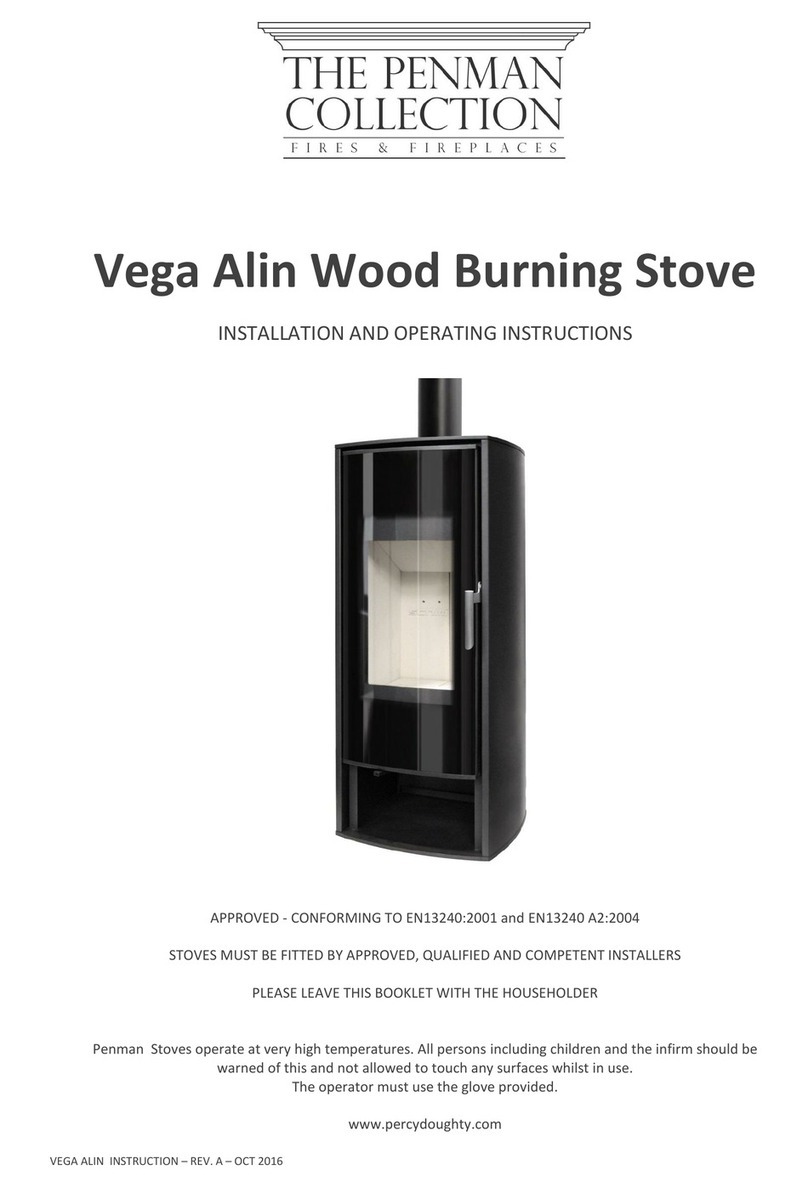
3.0 OPERATING INSTRUCTIONS
3.1 Suitable fuels
Please note that HETAS Ltd Appliance Approval only covers the use of wood logs and approved smokeless fuels on this
appliance. HETAS Ltd. Approval does not cover the use of other fuels either alone or mixed with the recommended fuels listed
above, nor does it cover instrucons for the use of other fuels.
Use the following fuels only:
Dry wooden log (beech, oak)
Wooden briquee
Brown coal briquee
You can nd the exact informaon on the technical data and on the appliance data badge. You must only burn the specied
fuel and failure to burn the correct fuel can damage the appliance and chimney system. This would also invalidate the warranty
of the appliance.
Depending on your choice of the fuels listed above, be sure that you use fuels of good quality.
Wooden logs reach 15-20% humidity which is the most appropriate for heang if they are stored outside for 1to 2 years (if they
are covered and protected from rain). Recently cut wood has a high moisture content and burns poorly and causes soot. Apart
from its very low heang value it is also a pollutant to the environment. High condensaon and tar can lead to blockage in the
stove and especially in the chimney. In all cases it causes deposit on the glass front and emissions that need to be avoided.
Burning wood is recommended for operang the appliance at its nominal capacity. You can get the exact data at a fuel
supplier. Load the replace with fuel according to heat demand. The heang value of 1 kg of dry wood is 4 – 4-5 kW/h. So you
can place about 1.3 kg of wood into a stove of 5 kW capacity every hour.
When burning wood, if you would like to reach a lower capacity, do not restrain the re. Put less wood in at one me instead.
Don’t throw the fuel in the combuson chamber, because it can damage or break the chamoe or vermiculite les. Be aware
that the volume of some types of wooden briquees increases during burning. Choose the wooden briquee that has the
appropriate size to the measurements of the combuson chamber and does not increase in size while burning.
You can use brown coal briquee for burning at nominal capacity just as wood or wooden briquee. Apart from that, it is also
excellent for keeping the embers glowing during the night (about 10 hours). In the case of brown coal briquees, wait unl the
fuel is completely burned through and close the primary air regulator to keep the embers burning only aer that. The types of
fuels that can be used, the maximum quanes that can be loaded at one me and the descripon of sengs for the air
regulators, can be found in the aached technical chart.
Reducing emissions
You can only avoid unwanted emissions by the use of the specied fuels. Put only the amount of fuel in the replace that is
appropriate for necessary heat transmission. Burning more fuel is unnecessary and leads to unwanted emissions. Don’t burn
waste in the appliance or products that can dramacally pollute the environment. This will also damage the appliance. The
use of other fuels than the ones listed above is not allowed.
You MUST NOT burn the following materials in the replace:
Wet or treated wood,
Wood-shavings, sawdust,
Inner bark, bark, shavings panel,
Coal dust,
Waste, scrap, plasc, rubble
Paper and cardboard (apart from lighng the re)
PAGE 10




























